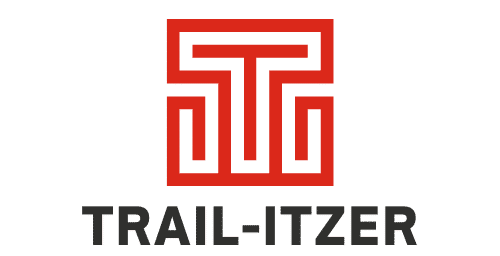The changing landscape of urban planning and real estate

In the ceaseless march of time, cities are living organisms that breathe through their streets, buildings, and public spaces. The urban landscape, once a backdrop for the daily hustle of life, is now at the forefront of a transformative epoch. Urban planning and real estate are no longer just about the creation of city blocks and the erection of skyscrapers; they are about sculpting the very essence of community life and the environment. The multi-disciplinary approach to urban development seeks to balance the demands of growth with the necessity for sustainable living.
As professionals and enthusiasts in the field, you are likely aware that the future of city planning and real estate development hinges on integrating environmental considerations, community needs, and technological advancements. Here, we will delve into how urban planning and real estate are evolving to create livable, resilient cities for tomorrow.
Lire également : What are the challenges of investing in rural real estate?
The Role of Urban Design in Shaping Public Spaces
Public spaces are the beating heart of any city. They are where social interactions flourish and where the community fabric is woven. Urban design plays a pivotal role in creating these spaces, ensuring they are not only aesthetically pleasing but also functional and inclusive.
The design of urban spaces must cater to a myriad of activities, from the morning jogger to the evening flaneur. By incorporating green infrastructure such as parks, greenways, and urban forests, cities can enhance the quality of life for residents while tackling environmental challenges. These spaces provide a respite from the concrete jungle, improve air quality, and contribute to the biodiversity of urban areas.
Dans le meme genre : The benefits of leed certification in real estate
Additionally, the layout and accessibility of public spaces are crucial. A well-designed network of open spaces encourages walking and cycling, which can reduce transportation emissions. The emphasis on open access and universal design ensures that everyone, regardless of age or ability, can enjoy the benefits of public spaces.
Integrating Sustainable Urban Development Practices
Sustainability is more than a buzzword in today’s urban planning and real estate sectors; it’s a guiding principle. Sustainable urban development practices are essential to creating cities that can thrive for generations to come.
The integration of sustainability begins with a strategic plan that prioritizes the efficient use of resources. This includes the implementation of energy-efficient building standards and the promotion of renewable energy sources. Sustainable practices also encompass water management through the use of rain gardens, bioswales, and permeable pavements to mitigate flooding and pollution.
Land planning also takes center stage in sustainable development. It involves careful consideration of how land is allocated for residential, commercial, and industrial use, ensuring that growth is balanced and does not encroach on valuable ecosystems. Sustainable land use helps to maintain natural habitats and contributes to the overall health of the urban environment.
The Evolution of Housing and Community Design
Housing is a fundamental component of urban planning, directly impacting the social fabric of a community. As urban landscapes evolve, so too does the approach to housing development. Gone are the days of one-size-fits-all residential blocks; today’s urban dwellers demand variety and personality in their living spaces.
Urban regeneration initiatives have breathed new life into declining neighborhoods, transforming them into vibrant communities. Adaptive reuse of existing buildings and infill development are strategies that preserve the character of a city while meeting housing needs.
Moreover, the design of housing must consider the changing dynamics of work and play. As remote work becomes more prevalent, the need for office space within the residential environment grows. Spaces that can seamlessly transition from living areas to work zones are in demand, underlining the importance of flexible design in modern housing.
The Impact of Technology on Real Estate and Urban Planning
Technology has revolutionized the way cities are planned and developed. The applicability of digital tools in urban planning is vast, from GIS for land use analysis to BIM for building design. These technologies enable planners and developers to visualize and simulate urban environments before they are built, allowing for more informed decision-making.
Real estate has also been transformed by technology. Online platforms and mobile applications have streamlined property transactions, making information readily available to both buyers and sellers. Moreover, the use of big data and AI in real estate analytics provides insights that drive smarter investment decisions.
As we move forward, the integration of smart city technologies, such as sensor networks and IoT devices, will further enhance urban living, making cities more responsive to the needs of their inhabitants.
The Strategic Planning for Urban Futures
A strategic plan lays the foundation for the future of city development. It is a comprehensive approach that encompasses economic, social, and environmental objectives. As urban landscapes change, strategic planning must evolve to address emerging challenges and leverage new opportunities.
Collaboration is key in crafting a strategic plan. It involves input from a wide range of stakeholders, including government officials, urban planners, developers, and community members. This inclusive process ensures that the plan reflects the diverse needs and aspirations of the city’s residents.
Furthermore, strategic planning is not static; it must be adaptive to the unforeseeable shifts in societal trends, economic conditions, and environmental pressures. Regular reviews and updates to the plan ensure that it remains relevant and effective in guiding urban development.
In conclusion, the landscape of urban planning and real estate is indeed changing, shaped by the needs and desires of the community, environmental imperatives, and the possibilities offered by technology. Urban design is becoming more people-focused, integrating public spaces that promote social interaction and well-being. Sustainable urban development practices are being embraced to ensure that growth is responsible and considerate of future generations. Housing and community design are evolving to reflect the new dynamics of work and lifestyle. Meanwhile, technology continues to offer innovative solutions that disrupt the traditional ways of city planning and real estate transactions. Lastly, strategic planning is crucial in navigating towards a resilient and flourishing urban future. As we navigate this changing landscape, the goal remains to create cities that are not only livable but also adaptable, sustainable, and prosperous for all who call them home.
